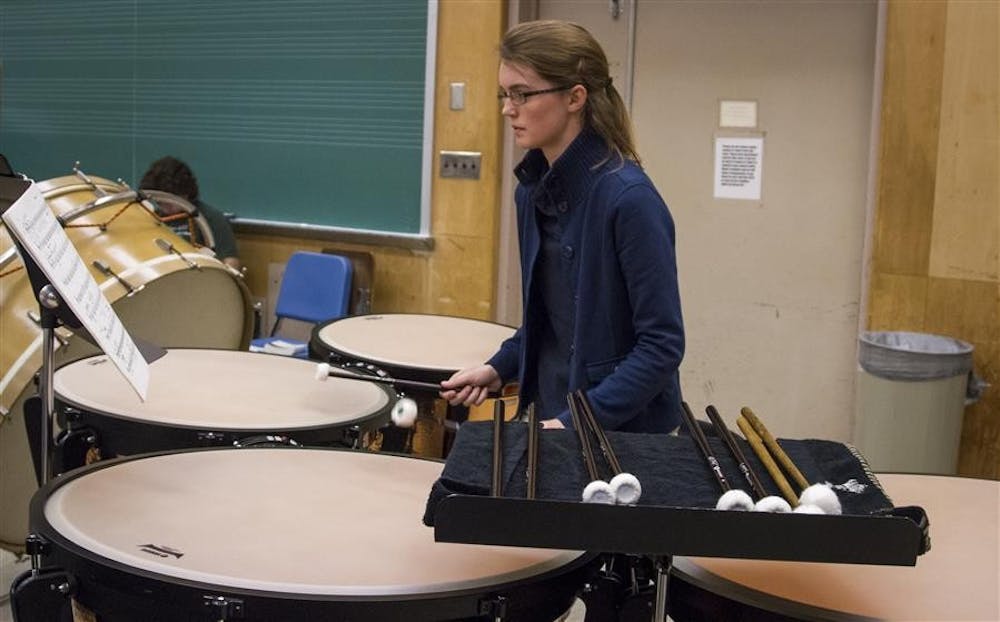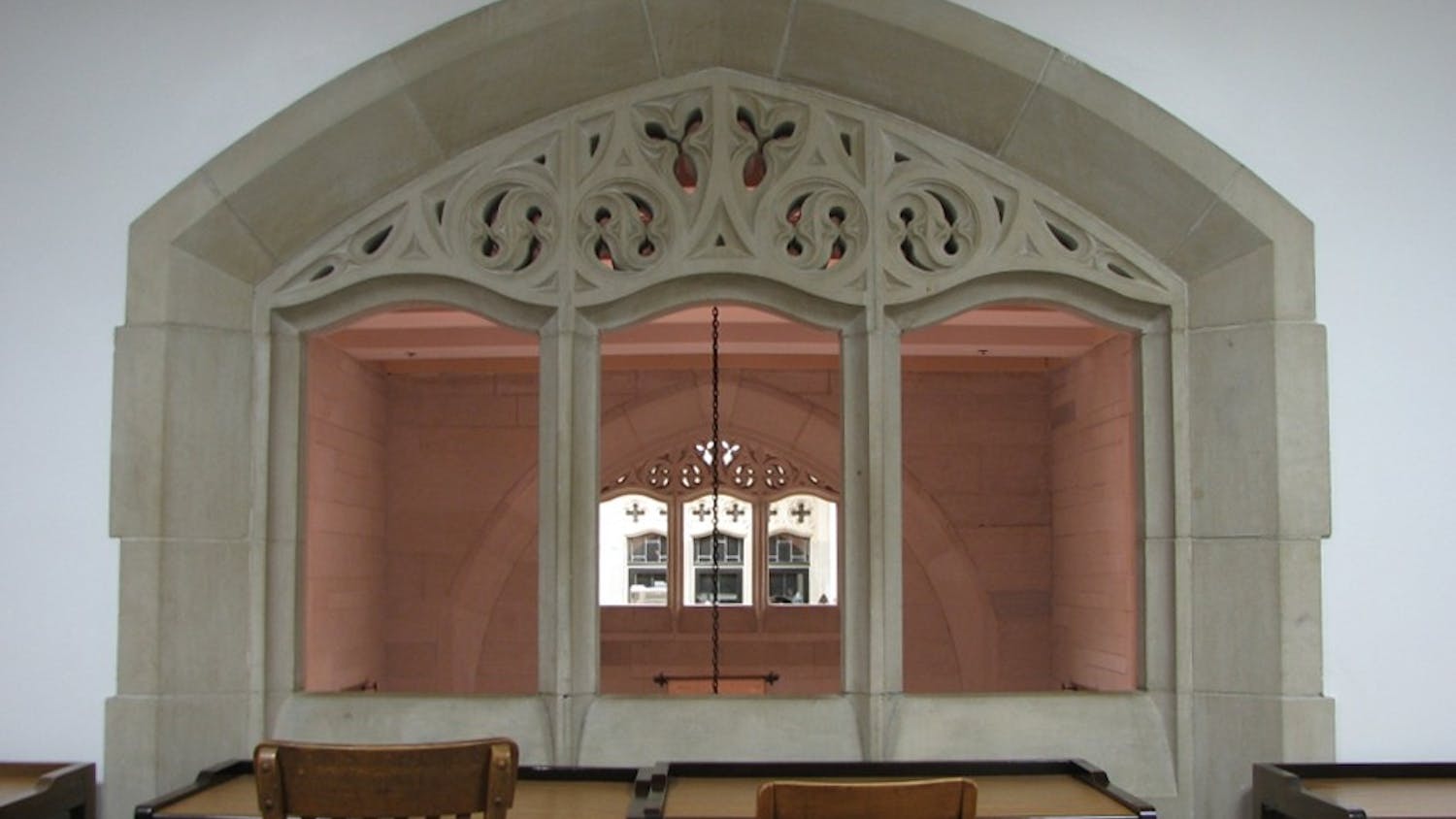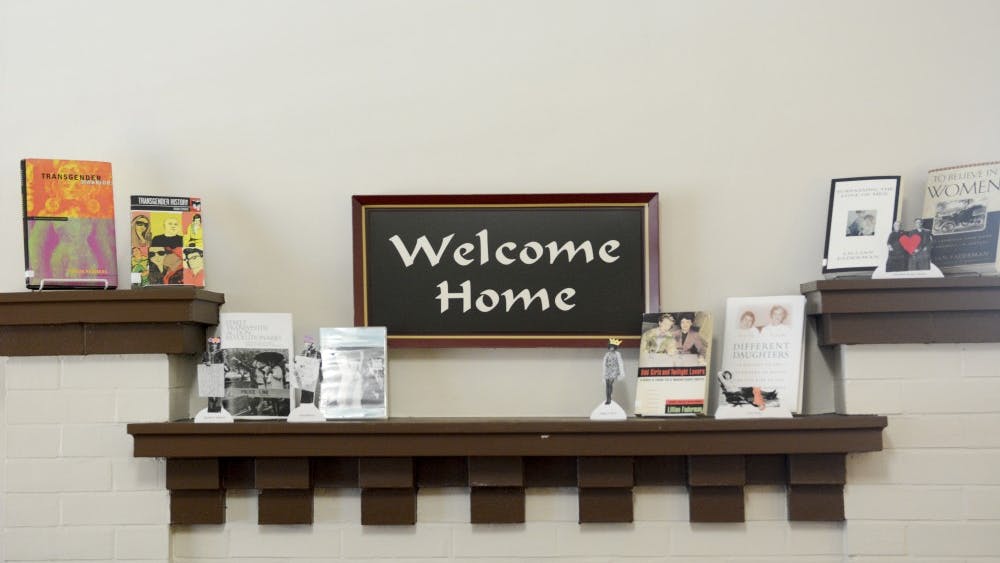A presidential tale
Kelly Kish’s large, L-shaped desk is full of neatly organized stacks of papers, multicolored pamphlets, and binders. An apple and a water bottle sit off to the side.
“There are always lists of things. They rarely get done,” Kelly says.
Kelly is the deputy chief of staff in the Office of the President, which she calls “the front desk of a $3-billion organization.” The office consists of 16 staff members including Kelly and President Michael McRobbie.
When McRobbie was appointed president in 2007, Kelly sent him a letter congratulating him and volunteering to help in any way she could. He took her up on her offer sooner than she expected, asking her to be his deputy chief of staff.
Six years into the position, Kelly describes her day-to-day work as a “hodge-podge” and “variety pack.”
Kelly says most of what she does is project management. She serves as the liaison between the president and the Board of Aeons, a student research team who works for the office. She also works closely with the IU Archives to complete research projects on the University’s history, and she serves on a variety of committees and task forces for the president.
“One of the things that’s unique about the president’s office is that we don’t do the same thing two days in a row,” she says. “Therefore, really our jobs are constantly evolving.”
Kelly says that’s both the most enjoyable and most challenging part of her job. She never gets bored because working for the president never fails to surprise.
“I never know what the next email from the president is going to say,” Kelly says. “They tend to be short. You tend to be left filling in some holes. I’ve worked with him now for a while, so I have a sense of what his vision is, and when he asks for one thing I kind of know he wants two.”
Kelly describes McRobbie as an intellectual with widely varied interests and an “incredible memory.” “You could start a conversation with him talking about red binders in the office and end the conversation talking about world poverty and hunger,” she says.
Kelly has a Ph.D. from IU in education. In addition to her work for the office, she says she tries to maintain some scholarly activity, such as attending academic conferences and continuing to do research. “It’s hard when you’re in an administrative and kind of demanding staff role like this, but I try,” she says. “Thankfully the president has always been supportive of my maintaining a scholarly agenda.”
As expected, Kelly says there’s a type of pressure that comes with working for the president’s office. “We sort of use the 200th anniversary of the University as a benchmark, but really the president’s job is to make sure that there’s 200 more years,” Kelly says.
But she’s quick to note how many other forces are at work in the University. “There isn’t really one seat of authority,” Kelly says. “Universities are a very odd organization in that way, in that power is very diffused and some of the most important decisions being made are in the classroom, or in the residence hall, or wherever students are.”
Her job may be demanding, but Kelly says she enjoys its unusual aspects. “All of my colleagues that work outside of higher education think it’s odd that I go to a football game for work, or attend a play for work,” Kelly says. “Where do you get to do that? That’s pretty special.” -RK
A kick for the win
Before every IU men’s soccer game, David Picioski can be found on the field setting up the goals, flags, cones, and signboards. And he’ll be there after, taking them all back down.
“If it’s freezing and raining, it takes a lot longer, but we still have to do it,” David says.
David is one of three student managers for the men’s soccer team. As a junior, he is in his second season with the team.
“We’re there every practice, every game, every meeting, every everything,” David says.
Before practice every day, David and the other managers meet with the coaches to discuss the practice plan and what they need to set up for drills. David says he acts as a facilitator during practice to make sure everything runs smoothly. He moves cones or passes balls in as needed.
On game days, David says he’s typically busy from about 3:30 p.m. to 10:30 p.m. He sets up the field, enjoys a pregame meal with the team in the athletic dining hall in Memorial Stadium, and helps with warm-up.
During the game, David’s in the press box doing match analysis. He speaks into a microphone, saying the name of each player who touches the ball. Later, an outside company coverts those tapes into stats sheets for the coaches.
Unlike the athletes, David doesn’t get priority scheduling for classes, so he has to plan his schedule around his job. He says between classes, his participation in other clubs, and the manager job, time management is a struggle. “I kind of pride myself on time management just because I like being busy,” David says. “It’s one of the things that keeps me sane. If I’m bored, I just don’t know what to do with myself.”
When the team goes out of town for a tournament, David says he could be gone anywhere from one to five days, depending on the team’s wins or losses. But that doesn’t mean he’s excused from his class work. In fact, he says, it means he has to get his work finished or tests taken early, before he leaves.
Last year David had the opportunity to travel to Alabama with the team and watch them win the NCAA national championship. “Everything kind of clicked at the right time for us,” David says. “Seeing all of the support from the students, from the alumni, was really inspiring. It was just an incredible experience.”
A soccer player himself, David says it was hard to transition into his new role. “I remember the first few weeks I was like, ‘I really want to play right now, but I’m stuck on the sidelines,’” he says.
But being on the sidelines brings a new perspective to the sport. “All my life I’ve had people tell me how to play the game and what to do and where to go,” David says. “Now I’m becoming that person where I’m really understanding the game.”
He says being with the team is a bonding experience, similar to what he’s felt with teams he’s played on in the past. “It’s not like I’m looked down on as a lower person or anything like that,” David says. “The players really treat us with respect, and I can say I’m great friends with everyone on the team.”
And as a student in the Kelley School of Business looking to have a career in sports business, David says his job provides him with invaluable opportunities for networking and learning from the professional staff. “I’m a relationship kind of guy,” he says. “I like meeting and interacting with a lot of people and different people every single day, and I get to do that here.” -RK
The right beat
Ten mallets lie on a flattened music stand to the left. Five pairs, and all contribute a distinct purpose according to what sound is needed. Four massive timpani sit waist high in a semicircle.
Junior Emilie Mitchell takes her phone, slides her fingers across the screen and pulls up Pano Tuner, her tuning app. She grabs one of the mallets and strikes the drums one by one. Turning the gauges on the side of each timpani, she tunes them.
It’s the University Orchestra’s second day of rehearsal for “The Nutcracker.” Though the ballet dancers drive the performance, the pit orchestra drives the rhythms. “The music creates the magic of everything that happens on stage,” Emilie says.
The percussion enforces the higher impact moments of the ballet. Without the timpani and percussion, the orchestra would still have full range of sound from high to low. The brass would still hold up. “But when you add the timpani to be the foundation and support, plus the bass drum hit and crash cymbal hit, you get a full body that is well-rounded,” Emilie says. “You thought it was powerful without percussion, but you add it in and it takes it to a whole new level.”
Emilie says composer Pyotr Illyich Tchaikovsky used different “colors” in the piece to complement what happens on stage. The percussion acts as the understudy to support the ballet. For example, when Mother Goose comes out, the audio begins with bassoons. Everything is playful and suites what unfolds on stage, Emilie says.
Emilie mans the timpani, and her fellow percussionists do the rest – freshman Dakota Smith on glockenspiel and cymbals; senior Ethan Geller on castanets, triangle, gong, and cymbals; and Bruno Cabrera on bass and snare drums, tambourine, and chimes.
“The orchestra contributes to the ballet because it’s delicate when it needs to be, it’s powerful when needs to be, and it’s majestic when it needs to be,” Ethan says.
Act 2 contains the movements for various ethnic groups – Chinese, Spanish, Arabian, and Russian. Percussion plays a large role in painting these pictures for the audience. You hear the tambourine and know you’re in Russia. You hear castanets and think Spain.
Among the sounds from the brass and string sections, the timpani comes in with a rumble. Act 2 is in full swing, and Emilie beats the drums with crisp vertical movements of her hands. The mallets bounce off the face of the timpani. When she completes her five seconds under the radar, she puts her hand on the drums to stop any reverberation.
“My dad refers to it as ‘the big band drummer,’” Dakota says. “A really good timpanist can make a really good band sound even better. It definitely has the potential to be one of the more powerful instruments.”
Without the percussion, it’s as if an entire puzzle is put together except one piece. The orchestra needs to work together as one, and the percussion adds a depth of sound that would otherwise be lacking.
“The dancing and music create a story that works,” Emilie says. There’s the story that takes you to the land of make believe that you wish for as a kid. And the music accompanies it wonderfully. I can’t imagine any other music.” -RW






